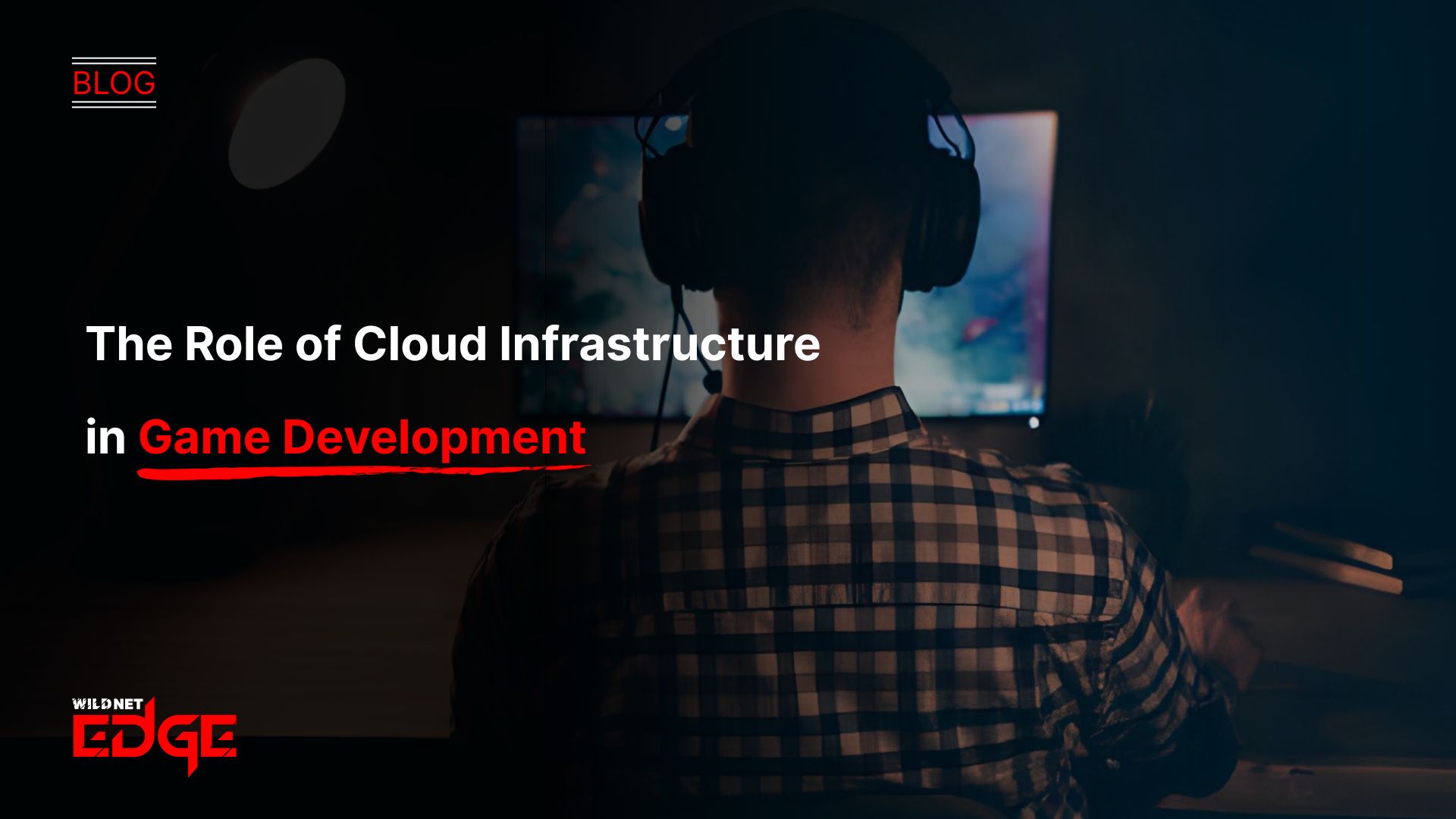TL;DR
This article explains how cloud infrastructure powers modern game development by enabling scalable multiplayer systems, player data management, and content delivery. It highlights benefits like global scalability, low latency via CDNs, and cost efficiency through pay-as-you-go models making cloud gaming solutions essential for building reliable, high-performance games worldwide.
In the modern gaming era, the difference between a global hit and a frustrating, laggy failure often lies in the backend. As games become more connected, persistent, and data-driven, a robust cloud infrastructure for games is no longer an option—it is the fundamental pillar of success. It provides the scalability, performance, and global reach necessary to meet the demands of today’s players.
What is Cloud Infrastructure for Games?
Cloud infrastructure for games refers to the comprehensive suite of on-demand computing resources, storage, databases, and specialized services like matchmaking and leaderboards hosted by cloud providers. This is a significant evolution from the old model of buying and maintaining physical servers in a private data center.
Instead of just “renting servers,” game developers leverage a vast ecosystem of managed services, often called “Backend-as-a-Service”. This allows development studios to outsource the complex backend plumbing like player authentication, databases, and content delivery and focus their resources on what they do best: creating great games.
Critical Benefits of Cloud for Game Development
Adopting cloud infrastructure is a strategic decision that provides massive advantages for studios of all sizes, from small indie teams to major publishers.
Massive, On-Demand Scalability
This is the most critical benefit. A game’s player base is notoriously unpredictable. A viral launch or a popular streamer event can cause your concurrent user count to explode from 1,000 to 1,000,000 in a matter of hours. With traditional hardware, this surge would cause catastrophic crashes. Cloud infrastructure provides elasticity, allowing your game to automatically scale its resources up to meet demand and, just as importantly, scale back down during quiet periods to save money. This ensures all players, whether they are the 100th or the 1,000,000th, get a smooth experience.
Global Reach and Low Latency
Modern multiplayer games require low-latency connections to be playable. Cloud providers have a global network of data centers. This allows you to deploy your game servers in regions close to your players (e.g., North America, Europe, Asia). By reducing the physical distance data must travel, you significantly reduce lag and improve the player experience.
Cost-Efficiency
Building and maintaining a global network of physical servers requires a massive upfront capital investment (CapEx). This is a major barrier for most studios. The cloud shifts this to an operational expense (OpEx) model. You pay only for the computing power, storage, and data transfer you actually use. This “pay-as-you-go” model drastically lowers the barrier to entry, allowing indie studios to compete on a global scale. It’s a key advantage of using professional Cloud Infrastructure Services.
Access to Managed Services
Cloud platforms offer a rich catalog of managed services that save thousands of development hours. Why build your own player authentication system, leaderboard database, or matchmaking logic from scratch? You can use managed services like AWS Cognito, DynamoDB, and GameLift. This allows your team to focus on creating unique gameplay features rather than reinventing the wheel for complex backend infrastructure. This focus on core gameplay is a specialty of a good Game Development Company.
Enabling Live-Ops and Continuous Delivery
Modern games are services (“Games as a Service” or GaaS). They are never “finished” and rely on a constant stream of new content, events, and updates (Live-Ops) to keep players engaged. Cloud infrastructure, combined with DevOps practices, makes this possible. Automated CI/CD pipelines allow you to safely and quickly deploy updates, new content, and bug fixes to your global player base with minimal downtime.
Cloud Gaming Solutions vs. Cloud-Backed Games
It’s important to differentiate between two major uses of cloud infrastructure for games:
- Cloud Gaming (Streaming): This refers to platforms like Xbox Cloud Gaming or GeForce Now, where the game itself runs on a powerful cloud server. The player’s device (a phone, a simple laptop) merely acts as a thin client, streaming the video and audio feed.
- Cloud-Backed Games (The Focus): This is far more common. The game runs locally on the player’s device (PC, console, or mobile), but it connects to the cloud for all online services multiplayer, player profiles, inventory, matchmaking, and leaderboards. This is the model used by most scalable game apps like Fortnite, League of Legends, and Call of Duty: Warzone.
Key Architectural Components for a Scalable Game
Building a scalable game backend involves several key components:
- Game Servers: This is the core logic for a multiplayer match. Modern approaches use containers (Docker) and orchestration (Kubernetes) for rapidly scaling dedicated game server instances.
- Game Backend Services: These are the persistent microservices for functions like player accounts, matchmaking, inventory, and analytics.
- Database Strategy: A mix of databases is often used. A relational database (like PostgreSQL) might handle secure transactions (in-game store), while a NoSQL database (like MongoDB or DynamoDB) handles massive volumes of fast-changing player state data.
- Content Delivery Network: Used to deliver large game clients, patches, and updates to players globally with high download speeds.
Our Cloud-Powered Game Development in Action: Case Studies
Case Study 1: An Indie Studio’s Viral Launch
- The Challenge: A small indie studio launched a new multiplayer mobile game. The game unexpectedly went viral after being featured by several popular streamers, and their simple, single-server backend crashed within hours.
- Our Solution: We provided emergency support to migrate their entire backend to a scalable AWS architecture. We containerized their server, set up auto-scaling groups to automatically add servers based on player load, and moved their player database to a managed Amazon RDS instance. This required a flexible Custom App Development Company partner.
- The Result: We were able to get the game back online in a stable state within 24 hours. The new infrastructure seamlessly scaled to handle over 1 million concurrent users, turning a potential disaster into a massive, sustainable success for the studio.
Case Study 2: A Global eSports Platform
- The Challenge: An eSports company was building a new platform for competitive mobile shooters. To be viable for professional play, they needed to guarantee an extremely low-latency experience for players across different continents.
- Our Solution: We designed a globally distributed backend using regional server clusters on Google Cloud with Kubernetes Engine. We built a custom matchmaking system that calculated the lowest-ping server location for all players in a lobby before spinning up a dedicated server instance in that region.
- The Result: The platform launched with a best-in-class networking performance, achieving sub-50ms ping for over 95% of its competitive matches. This reliability was critical in establishing the game’s credibility in the professional eSports market. Building these kinds of platforms is one of our core Software Development Solutions.
Our Technology Stack for Game Backends
We use a modern, high-performance stack to build the backends for scalable game apps.
- Cloud Platforms: Amazon Web Services (AWS), Google Cloud, Microsoft Azure
- Containerization & Orchestration: Docker, Kubernetes (EKS, GKE, AKS)
- Game Server Frameworks: Nakama, Photon Engine, or custom builds (Node.js, Go, C++)
- Databases: PostgreSQL, MySQL, Amazon Aurora, MongoDB, DynamoDB, Redis
- CI/CD: Jenkins, GitLab CI, Terraform
Conclusion
Cloud infrastructure for games is the essential, non-negotiable foundation for modern game development. It provides the scalability to survive success, the performance for a global player base, and the cost-efficiency that empowers studios of all sizes. Embracing cloud gaming solutions and backends is how you build a resilient, future-proof gaming experience.
Ready to build a game that can scale to millions? At Wildnet Edge, our AI-first approach enhances our Mobile App Development Services, allowing us to build intelligent matchmaking, analytics, and anti-cheat systems into your game’s backend.
FAQs
The ROI comes from shifting CapEx to OpEx you don’t pay for idle servers. More importantly, it comes from not losing revenue. A cloud-native game can scale to meet viral demand, capturing all potential sales, whereas a fixed-hardware model would crash, leading to massive lost opportunities and reputational damage.
Cloud infrastructure uses “auto-scaling.” You can set rules (e.g., “if average CPU load goes above 70%”) that automatically provision new server instances to handle the increased load. When the traffic dies down, these extra instances are automatically shut down, so you only pay for the peak capacity when you need it.
For real-time multiplayer games, the biggest challenge is managing latency. This is solved by using a globally distributed architecture—placing game servers in data centers close to your players and writing highly optimized, low-latency netcode.
It’s actually the opposite. The pay-as-you-go model makes it cheaper to start, as there’s no upfront hardware cost. Furthermore, managed services (BaaS) like Firebase or AWS Amplify can handle the entire backend (auth, database) for you, making it less complex for a small team to launch.
A BaaS (like Firebase, AWS Amplify, or Nakama) is a pre-built cloud backend that provides common game features as services. This includes player authentication, cloud storage for save games, leaderboards, and databases, all accessible via simple APIs. It dramatically accelerates development time.
Cloud infrastructure enables an “authoritative server” model. Instead of trusting the player’s game client (which can be hacked), all critical game logic (like “did that shot hit?”) happens on your secure server in the cloud. Cloud providers also offer robust, built-in DDoS protection.
The first step is a planning and architecture phase. You must define your game’s core technical needs: Is it real-time multiplayer? How much player data will be stored? What is the expected user load? These answers determine the exemplary architecture and services to use.

Nitin Agarwal is a veteran in custom software development. He is fascinated by how software can turn ideas into real-world solutions. With extensive experience designing scalable and efficient systems, he focuses on creating software that delivers tangible results. Nitin enjoys exploring emerging technologies, taking on challenging projects, and mentoring teams to bring ideas to life. He believes that good software is not just about code; it’s about understanding problems and creating value for users. For him, great software combines thoughtful design, clever engineering, and a clear understanding of the problems it’s meant to solve.
 sales@wildnetedge.com
sales@wildnetedge.com +1 (212) 901 8616
+1 (212) 901 8616 +1 (437) 225-7733
+1 (437) 225-7733































